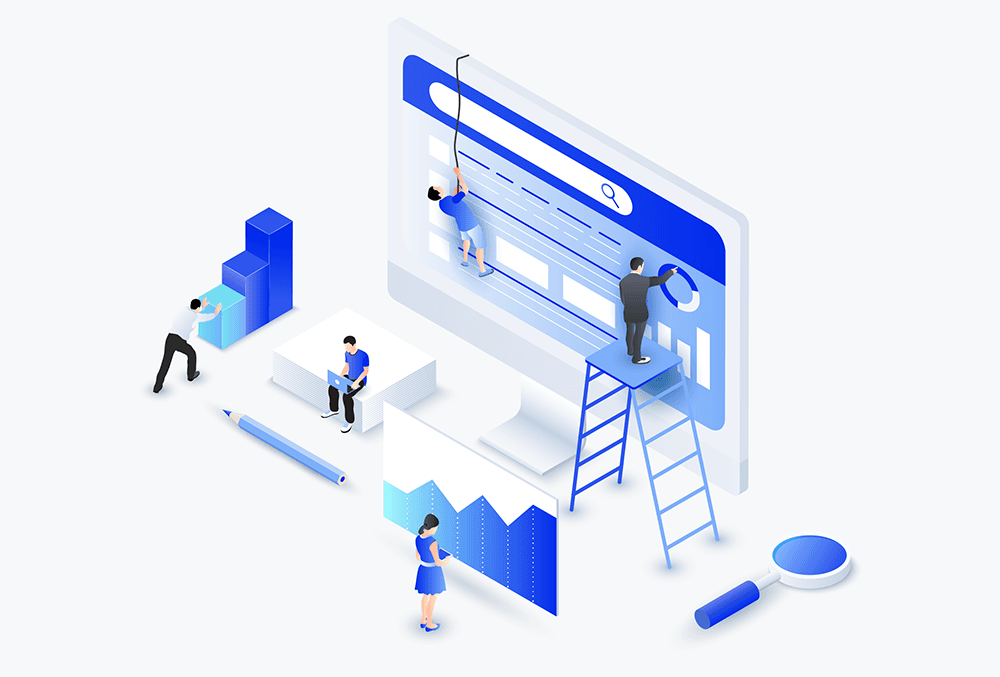At Solidstudio, we like to keep things transparent and so, we thought it would be a good idea to share some more information about our UX process within the projects with our clients. As much as eMobility solutions are the main core of most of most of our publications and general communication, we’d like to break it down with some insights on how we work within the dev projects.
We know the importance of good UX but we’re also well aware that some may pay more or less attention to it than others. With that in mind, our UX process has been constructed in such a way as to serve both approaches.
Behind our UX
Generally speaking, we put a lot of care into grasping what is the desired outcome and we’re trying to engage our customers into taking an active part in the creation of mockups and final UI.
- Such approach serves a couple of goals, some of them being:
- Transparency with our customers in regards to the UX process (not only final mock-ups)
- Possibility of better price estimation during sales process
- Environment optimized for designers working on a product concept (which translates into product quality)
The way we create and lead the UX within the projects can be narrowed down to 6 steps. Each of which plays a huge role in the success of the final delivery. Below, we’ll try to break them down a bit.
Initial analysis and benchmarking
The kick-off of the UX workload starts with a thorough understanding of what it is that's to be made. This is where our team carefully goes through all the materials delivered by the client, analyses them and, if there’s a need, asks any necessary questions on an entry level.
This is also the time to look for the current trends, solutions implemented by others, some of the best practices and the general state of the matter as it stands on the market.
Such an in-depth analysis & research allows our designers to draw valuable conclusions and become familiar with whatever the project is.
The outcomes of the initial step are:
- thorough analysis of the customer’s needs
- extensive market research
- good knowledge of the current trends
- acquiring all the necessary information to kick off the project
The concluding part would be the presentation summing up what has been gathered presented to the client.
Workshops with the customers
After initial analysis, the next step contains the customer workshops and whatever it takes to get them ready.
It starts with preparing all the materials necessary for a successful workshop. We prepare the Miro tables and tutorials that are to be presented to the client. Our designers and PM also figure out the agenda of the meeting in such a way as to present everything that has been established so far in the most attractive way.
The actual workshop with clients involves event stormings and user story mapping, all discussed with the clients and open for any necessary alterations.
The outcomes of this steps are as follows:
- Gathering all the materials including the Miro tables
- An initial walkthrough with PMs, designers and the clients
- Event storming and a space for discussion
After the workshops are complete, the client gets an executive summary and previews on the project.
Product conceptualization
It might be said that this is where the actual UX work kicks in. This step is all about starting to establish the actual product and how it’s supposed to be created.
One of the main points here is determining and describing the user-flows - which is nothing short of the path of clicking it takes for someone to trigger the desired action i.e. on a mobile app. Once this is settled, the next issues on the conceptualization agenda are to create the information architecture.
This is also where the first low-fi schemes are being created.
The outcomes here are:
- user-flows establishment
- information architecture (to be confirmed with the clients)
- low-fi schemes
It must be mentioned that the work done on product’s conceptual architecture is being communicated to the client and put forward for reviews.
Wireframing
Based on the outcomes from the previous steps, with the wireframing we start to develop a much more advanced product.
With this step, the low-fi models are being created (in black and white for the starters). This is also where we create the clickable prototype in Figma.
The client then gets an advanced visualization to be checked. Later on, based on any feedback, our team takes time to implement any changes (if such are desired).
As much as the list of outcomes in this step is not to extensive, these are all crucial in the final design process:
- Low-fi models
- User-like prototype in Figma
- Alterations as requested by the client
Worth underlining is that with this step we require our customers to provide us with a green light in order to go further.
Design
Despite what some people may think, the proper design only starts here, after all the above are finished and accepted.
This step includes the look&feel project. That is, the presentation of what the design is supposed to look like in terms of colors, brightness, shapes or the use of pictures and illustrations. We also prepare the moodboards that are to be shown to the customers.
Finally this step includes the UI design and the preparing of style guides for the developers.
It might be said, that here’s where the most crucial work in terms of the actual design happens, among the outcomes there are:
- Moodboards
- Look&Feel projects
- UI
- Materials for developers
In this step, the client gets to see the product as it is supposed to look like in the final version. A meeting is being held to discuss the product and possibly make some final amendments.
Retrospective & testing
This would be the final part and most probably the most self-explanatory.
It’s the time to run some usability testings and consult any possibilities with the developers, if needed. It’s pretty much all about the final reviews and some last minute minor changes.
Generally, it serves the purpose of making sure everything run smoothly and works in an agreed manner.
Our UX process - post scriptum
As stated before, we value a good UX as much as we value transparency with our clients. A good design is one of the key factors in creating a successful project. Well-done UX can make the difference between a user enjoying using your product or service, and a user becoming frustrated and giving up.
The offered process takes into consideration both parties, the client and the end-user equally and allows us to deliver the best solutions satisfying to all.
We would also like to point out that we’re open to any discussion and alterations in case any client believes it would suit them best. Should anyone has any questions, we’re more than happy to answer them!

